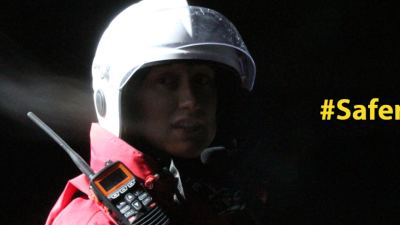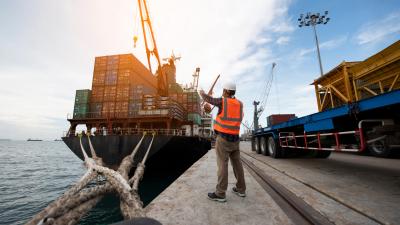
IMRF launches #SaferSAR initiative in collaboration with Lloyd’s Register Foundation
IMRF launches #SaferSAR initiative in collaboration with Lloyd’s Register Foundation to develop information sharing of SAR incidents.
This page is approximately a 3 minute read
This page was published on

of occupational injury types consist of dislocations, sprains and strains, bone fractures, wounds, and superficial injuries.
Link to report: Safety Challenges at Sea: Data and Evidence | University of Strathclyde
Funding from Lloyd’s Register Foundation has supported researchers from the University of Strathclyde and the UK Health and Safety Executive to assess the literature and data related to maritime occupational accidents. The work has reviewed evidence on the most common types of accidents, the immediate and underlying causes of those accidents, trends in the accident data, and the taxonomies used in the reporting system.
Lloyd's Register Foundation’s Evidence and Insight Centre commissioned the research, led by researchers from Strathclyde’s Department of Naval Architecture, Ocean and Marine Engineering, in order that it and others can focus their interventions for maximum improvements in safety at sea. The research focused on merchant ships over 500 gross tonnage trading internationally and on relevant literature from the past 20 years.
Key findings:
Limitations to the current reporting system:
Although reliable insight into the immediate causes of accidents is readily available in the literature and databases reviewed, underlying causation is not, which limits the ability to learn from accidents. Additionally,
The report also confirms:
Report recommendations:
Although maritime occupational safety has improved over time, work-related death, serious injury and long-term disability remain a significant problem in the maritime sector. More comprehensive, connected and systematic data collection is needed, involving a wide range of stakeholders, in order to improve the accuracy of data and establish underlying causation. Significant improvements in safety through learning from accidents, incidents and near-misses - is only made possible when underlying causation is accessible. As the report suggests, improvements in reporting taxonomies, including human, organisational and environment, design and operational factors, is potentially one part of the solution.
Next steps:
Lloyd’s Register Foundation is exploring how it can make a distinctive difference in this space. If you have ideas on how to make occupational accident reporting better suited to preventing future accidents contact us via our LinkedIn Ideas Space or email info@lrfoundation.org.uk.